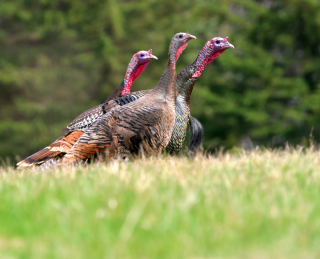PA Game Commission Seeks Public Assistance in Annual Turkey Survey

HARRISBURG, PA - The Pennsylvania Game Commission again is seeking input from the public in surveying wild turkeys this summer. The Annual Pennsylvania Wild Turkey Sighting Survey opens July 1 and runs through Aug. 31.
Participation is important for turkey population management. Survey data allow the agency to determine total wild turkey productivity and compare long-term reproductive success within Pennsylvania and across states, as this is a standard methodology used across the country. Data also are used in the turkey population model to track population trends.
Turkey sightings can be reported through the Game Commission’s website https://pgcdatacollection.pa.gov/TurkeyBroodSurvey. The mobile app is no longer available. The agency recommends saving this link to your favorites for quick access to report turkey sightings.
On the website, participants are requested to record the number of wild turkeys they see, along with the county, township, wildlife management unit (WMU), date and contact information if agency biologists have any questions. Participants may also simply drop a “pin” on the map for the location data to automatically populate. Location data are used only for the survey, not for law enforcement and are not shared. Viewers can also access the raw data and reports from previous years.
“The turkey survey enhances our agency’s internal survey, which serves as a long-term index of turkey reproduction and is used in our turkey population model,” said Game Commission Turkey Biologist Mary Jo Casalena. “Participants should report all turkeys seen, whether gobblers, hens with broods, or hens without broods.”
Many factors, including spring weather, habitat conditions, previous winter food abundance, predation, and last fall’s harvest affect wild turkey productivity.
Statewide, reproductive success last summer and in 2021 were above average (3.1 poults per hen). At the WMU level, reproductive success in 2022 either improved or was similar to the previous three-year average in 17 of 23 WMUs. It declined to below the previous three-year average in only six WMUs (compared to declining in 11 WMUs in 2021). Units that declined were WMUs 3A, 3B, 3C, 4C and 5D, with a slight decline in WMU 2D.
Like many other states this survey includes input from both agency personnel and the public. “Thanks to the large sample size from all corners of the Commonwealth, we have high confidence in the results,” Casalena emphasized. “Let’s maintain these results in 2023 and even increase participation,” she added.

